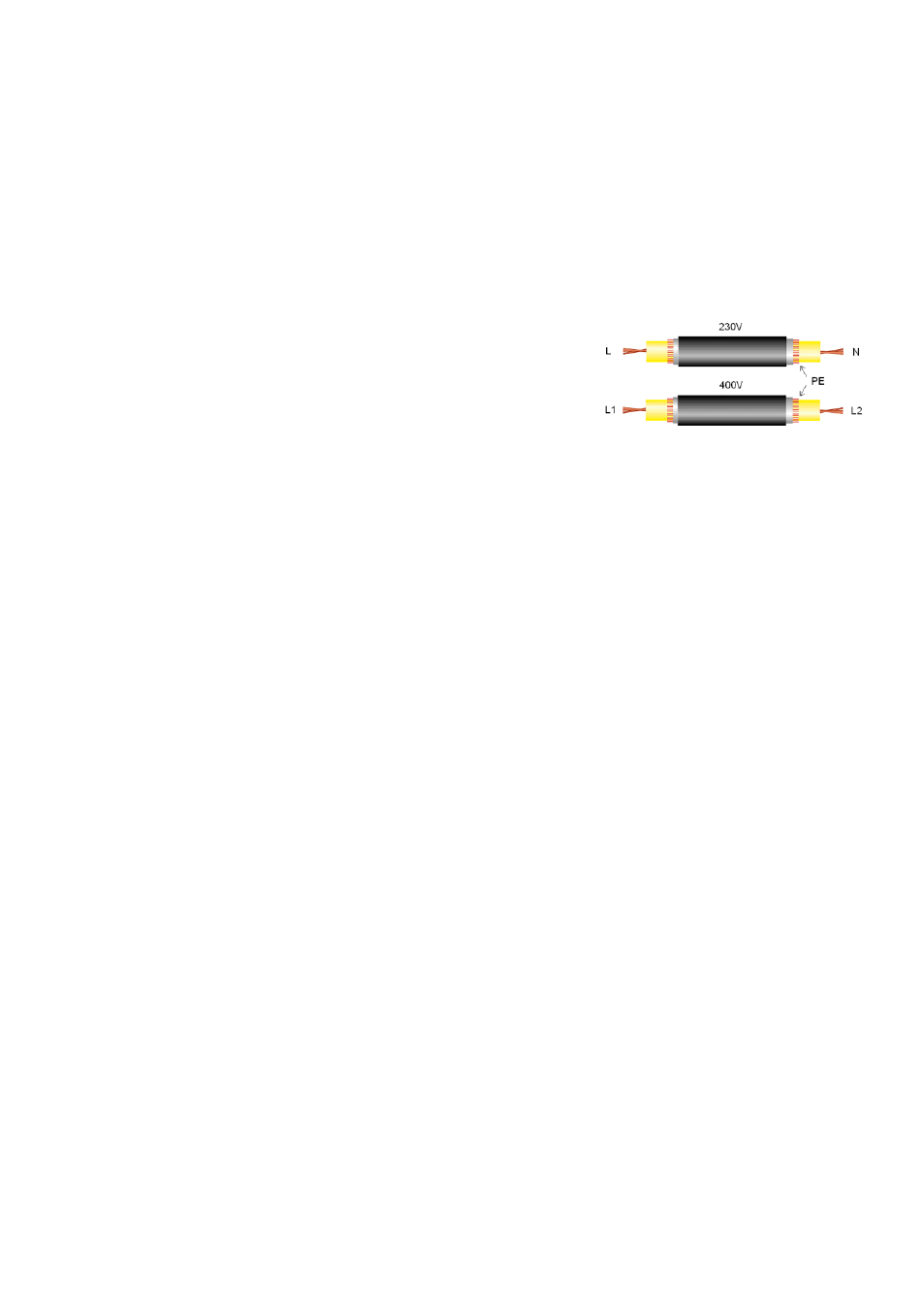Description and connection, A) dimensioning, B) installation – Fenix MAPSV 30 User Manual
Page 7

7
The supplier must inform other construction suppliers of the place where the heating unit is
installed and of the related risks.
The presence of the heating cable must be made evident by the posting caution signs or
markings in the fuse box and be part of electrical documentation.
Any manner of use different from those specified in this user guide should be consulted with
the manufacturer.
1. Description and connection
The heating cables should be connected to a 230V/400V, 50Hz
electricity network. Degree of protection: IP67.
The cable jacket is resistant to UV radiation, jacket
temperature resistance is 80°C, and it is self-extinguishing.
The protective braiding is to be connected to the PE protective
conductor.
2. Use in thawing gutters, downspouts and roofs where snow does
not melt on its own
Cables installed in guttering systems provide protection against damage caused by freezing water. The
heating cables melt the ice so that water may flow out freely.
Cables installed on a roof provide protection in the following cases:
a) when snow cannot slide down on its own from the roof into the gutters and it accumulates at
the snow-breaking barriers or valleys, causing the roof covering to be overloaded excessively
due to the accumulated wet snow,
b) when snow cannot slide down on its own from the roof into the gutters and so the accumulated
water below the snow barrier creeps in through the roof covering and leaks into the building,
and
c) when snow sliding down from the roof forms into a cornice and does not flow into the gutters.
These systems are always combined with laying the cable into the gutters and downspouts (for
example, by laying the cables in a saw-toothed pattern).
If installed on a roof, the heating cable must be prevented from being damaged (torn away) by sliding
snow.
a) Dimensioning
For regular gutters and downspouts (Ø150mm), the unit is installed for a heat output of 40W/m. For
altitudes of 1,000 m and more above sea level, the heating output should be based on local conditions
but be at least 60W/m. The spacing between the cables in the gutters and downspouts should not be
more than 80 mm. The surface-area output of the cables in the gutters and on the roofs should be
250W/m
2
to 300W/m
2
, and not less than 300W/m
2
for altitudes of more than 1,000m above sea level.
b) Installation
To attach the heating cable into a standard gutter or downspout (Ø150mm), use a “gutter clip” or a
“downspout clip” (clips to the downspouts are to be fixed by a chain). The distance between the clips
should not be more than 25cm.
To attach the heating cable in atypical gutters, valleys, and on roofs, use a “C” roof clip or a special
clipping method according to local conditions. The heating cable is fixed using four clips per meter of
